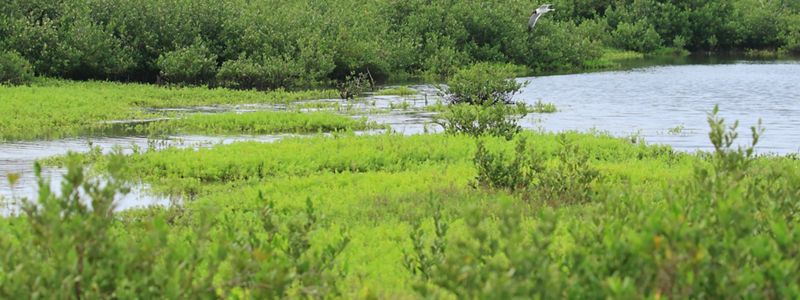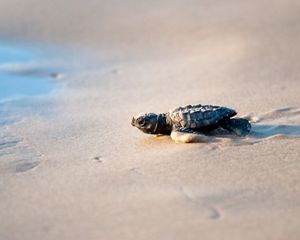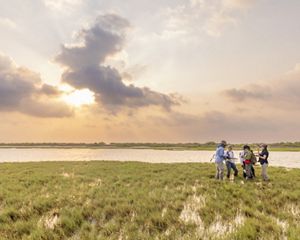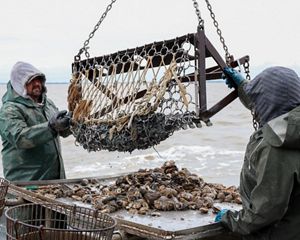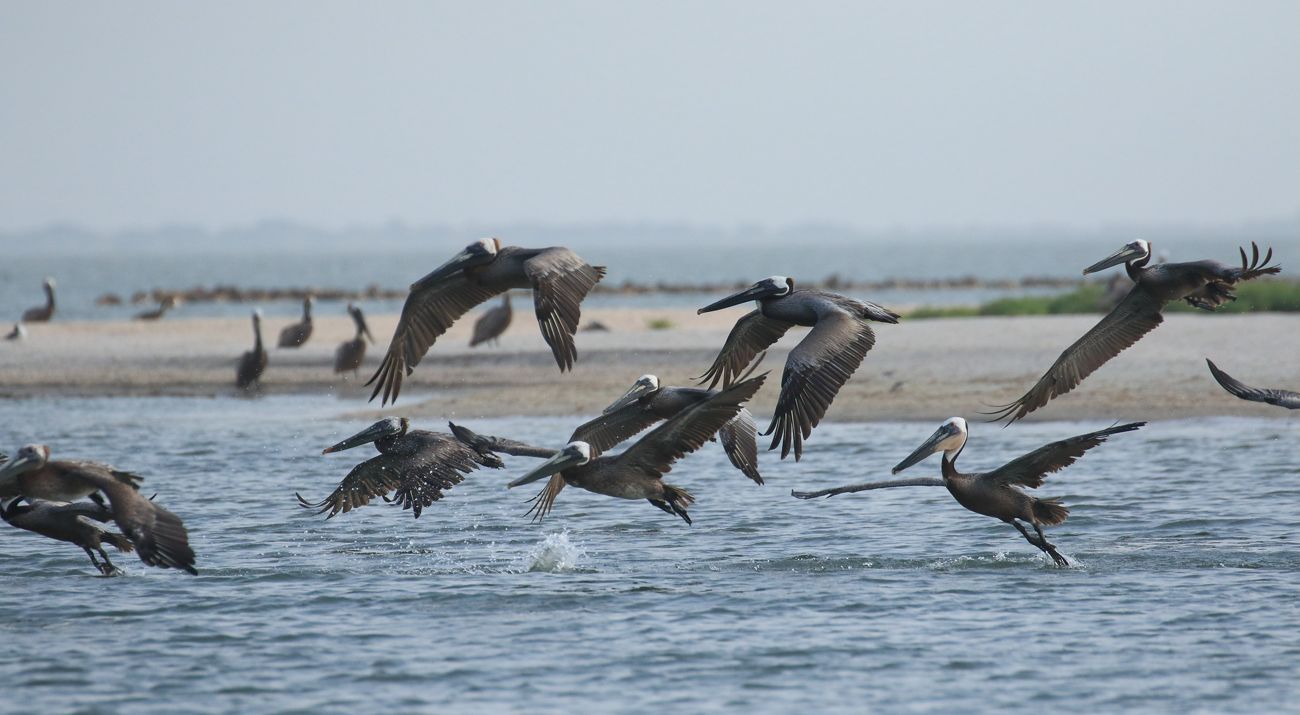
Shamrock Island Bird Rookery
This site provides a crucial nesting site for bird colonies and a window seat for coastal conservation.
Once part of Mustang Island, Shamrock split off more than 60 years ago after pipeline channelization and a major hurricane stole some of its sand. The nascent island boasts shallow seagrass meadows full of fish and invertebrates, marshlands that inundate in high tides and shrub-filled uplands that mirror those found in South Texas.
"You have so many different habitats on Shamrock, said Sonia Nájera, TNC's director of landscape initiatives, from below-sea level landscapes like seagrass beds to ones at least a foot above sea level, including upland brush and grasses. And with that, you get lots of different shelters and resources for birds and other wildlife that make the place come alive."
Protecting Shifting Shorelines
Shamrock Island's upland stretches, dotted with shrubs such as honey mesquite, granjeno and salt cedar, form about two thirds of the landscape. The shrubs provide above-ground nesting sites for wading birds like roseate spoonbills and reddish egrets, and thousands of brown pelicans. These pelicans, which warm their eggs using the heat off their feet, just came off the endangered species list a few years ago thanks to rookeries like Shamrock.
Gulls and terns are ground nesters, nesting instead on the sandy flats that surround the island's shrubbier terrain. Among these month's-long residents are royal terns, sandwich terns and black skimmers, which have become relatively rare.
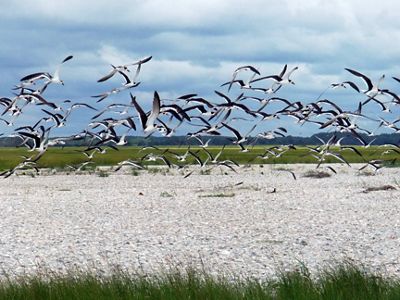
"Black skimmers are declining rapidly throughout their range," Nájera said, adding that coastal flooding, human disturbance of nesting colonies and other factors have limited nesting sites for many coastal bird species statewide.
To help retain quality sites at Shamrock, TNC and other organizations have ringed it with reinforced rock walls. These 27 breakwaters buffer the impact of wind-driven waves that stream across Corpus Christi Bay onto Shamrock. Breakwaters help maintain calm waters around the island, allowing for seagrass to thrive. Even with such measures, shoreline erosion, overtopping and breaches are a constant threat and chip away along the island's edges annually.
Quote: Sonia Nájera
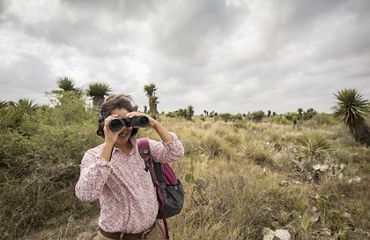
Shamrock is important in and of itself, but it's also part of this larger system that many species rely on.
Accessible Testing Grounds
Shamrock's importance to regional colonial nesting birds—and its proximity to Mustang Island—help it serve as a testing site for island restoration measures. For instance, TNC and partners are constructing and monitoring near-shore stabilization approaches, which include evaluating different techniques for breach repair and sediment accretion. Bird research is being led by the Harte Research Institute of Texas A&M and Coastal Bend Bays & Estuaries Program; their project evaluates which Texas coastal islands should be prioritized to restore and stabilize for population and species survival.
Quote: Sonia Nájera
Everything we’re here serves an important purpose. It’s all part of doing everything we can to keep Texas’ natural spaces as healthy as possible.
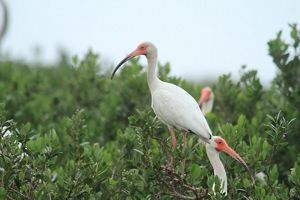
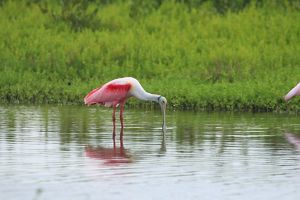
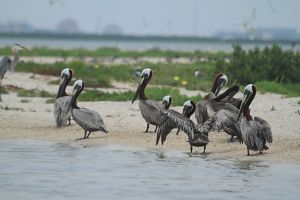
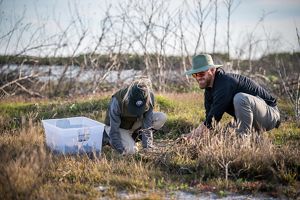
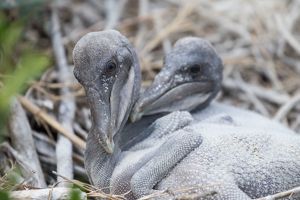
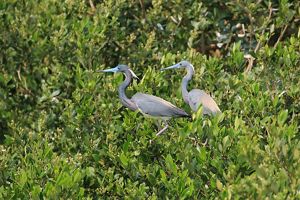

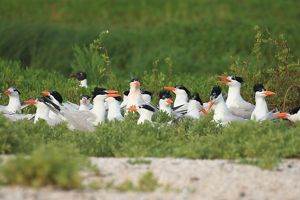

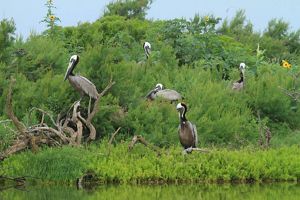

BIRD BIODIVERSITY: Many species, like white Ibis, nest at Shamrock Island. © Rich Kostecke

JUST ROSIE: A roseate spoonbill forages through shallow waters. © Rich Kostecke

SPECIES AT RISK: Brown pelicans are federally listed as endangered. © Rich Kostecke

MAKING A DIFFERENCE: Volunteers plant native seedlings to enhance habitat. © R.J. Hinkle

KEY ROOKERY: Shamrock Island is a critical nesting ground for birds. © Rich Kostecke

DISTINCTIVE COLORING: Tricolored herons, like these, have blue-gray feathers. © Rich Kostecke

ON THE HUNT: Crested caracaras feed on a variety of small animals. © Rich Kostecke

COLONIAL NESTING: Royal terns nest on the ground in the open. © Rich Kostecke

NOT SO RED: Reddish egrets can be dark gray or white in color. © Rich Kostecke

NESTING HABITAT: Brown pelicans often nest on low trees and mangroves. © Rich Kostecke
We Can’t Save Nature Without You
Sign up to receive monthly conservation news and updates from Texas. Get a preview of Texas's Nature News email.
